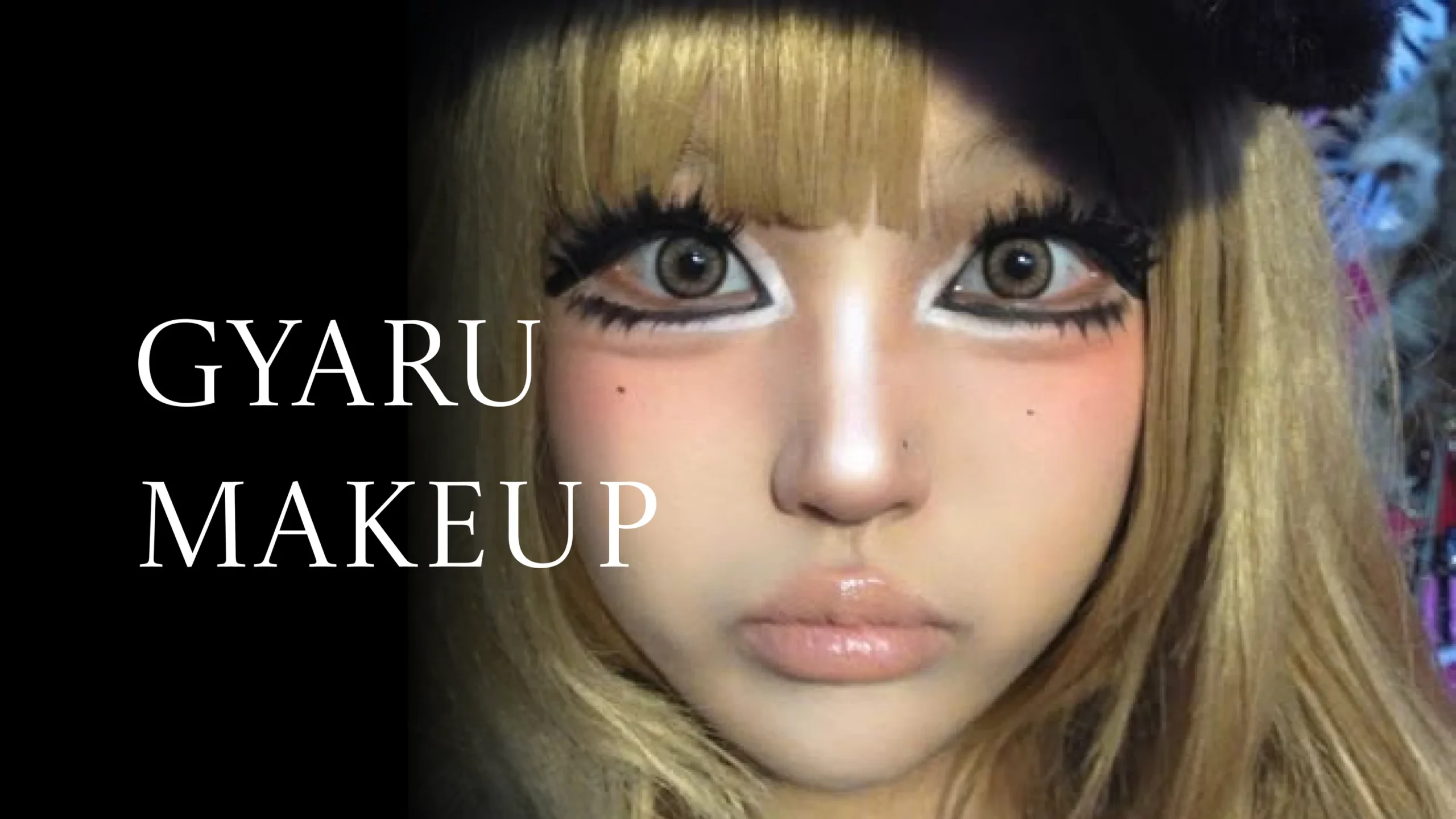
Fashion is often a reflection of society, capturing the mood, values, and resistance of each era. In Japan, where cultural conformity and modesty have historically been emphasized, some subcultures have emerged as a direct rebellion against the mainstream. One of the most fascinating of these is gyaru fashion, a bold, extravagant, and unapologetically glamorous style that shook up the youth culture of Japan in the late 20th century. With its dramatic makeup, sun-kissed tans, and statement clothing, gyaru became both a style and a lifestyle—challenging norms while empowering young women to express themselves in radical new ways.
This article explores the origins, evolution, characteristics, and cultural impact of gyaru fashion, while also examining its legacy in today’s global fashion scene.
Origins of Gyaru Fashion
The term “gyaru” (ギャル) is derived from the English word “gal.” It first entered Japanese youth culture in the 1970s, promoted by a jeans brand called “Gals.” However, the movement didn’t truly catch fire until the 1990s, when Japan was undergoing rapid social and economic changes.
During this time, many young Japanese women grew disillusioned with rigid societal expectations: modest dress codes, pale skin ideals, and the cultural pressure to become dutiful wives or workers. Gyaru emerged as a direct rejection of these roles. Instead of aspiring to be traditionally “proper,” gyaru girls sought freedom, attention, and confidence through their clothing and beauty choices.
This was not just fashion—it was rebellion in glitter and eyeliner.
Defining Features of Gyaru Fashion
What makes gyaru stand out is its distinct visual identity. Unlike the soft and minimalist Japanese aesthetics often associated with brands like Uniqlo or Issey Miyake, gyaru fashion thrives on excess, glamour, and attitude.
Some of the signature elements include:
1. Tanned Skin
At a time when pale skin was considered the epitome of beauty in Japan, gyaru women proudly wore bronzed tans. Many visited tanning salons or used bronzers to achieve this look. The tan symbolized a rejection of traditional ideals and a desire to look flashy and confident.
2. Bold Makeup
Gyaru makeup is extreme, with dramatic eyeliner, fake eyelashes, circle lenses for larger-looking eyes, and sometimes even white eyeliner or eyeshadow to exaggerate eye size. Nude or glossy lips were also common. The overall goal was to create a doll-like, glamorous effect.
3. Hair Styling
Hair was often dyed in shades of blonde, light brown, or other bright hues—another defiance against the natural black hair expected in schools and workplaces. Big curls, elaborate updos, and voluminous extensions were all part of the gyaru aesthetic.
4. Fashion Choices
The wardrobe included miniskirts, platform heels, flashy accessories, and decorated nails. Outfits often drew inspiration from Western trends, particularly Californian beach culture and nightlife fashion.
5. Decorated Nails
Long, heavily decorated acrylic nails were considered essential. Rhinestones, glitter, and intricate patterns elevated nail art into a form of self-expression.
6. Attitude and Lifestyle
More than the clothing, gyaru embodied a carefree, confident, and sometimes rebellious lifestyle. It was associated with partying, shopping, and enjoying life outside the rigid norms of Japanese society.
Substyles of Gyaru
Like many fashion movements, gyaru evolved into a variety of substyles. Each had its own aesthetic twist while staying under the gyaru umbrella:
-
Kogal (コギャル): Popular among high school girls, kogal emphasized short school uniforms, dyed hair, loose socks, and playful accessories.
-
Ganguro: One of the most extreme forms, featuring ultra-dark tans, white makeup highlights, neon clothing, and platform boots. It shocked Japanese society with its boldness.
-
Hime Gyaru (Princess Gyaru): A hyper-feminine substyle inspired by European royalty, featuring tiaras, pastel dresses, lace, and ornate hairstyles.
-
Onee Gyaru: A more mature variation, focusing on elegance with stylish dresses, high heels, and toned-down makeup compared to earlier, louder styles.
-
Agejo: Inspired by hostesses, this style emphasized glamorous, sexy, and high-fashion looks, with body-hugging dresses and dramatic evening makeup.
Each substyle reflected different aspects of personality and lifestyle, offering gyaru enthusiasts a wide spectrum of self-expression.
Gyaru’s Cultural Impact
The rise of gyaru challenged the way Japanese society viewed women. While critics accused gyaru girls of being shallow or delinquent, supporters saw them as empowered, independent, and confident. By rejecting traditional beauty standards, they opened space for alternative forms of femininity.
Magazines such as Egg and Popteen played a key role in popularizing gyaru culture, showcasing new styles, tutorials, and interviews with gyaru icons. Shopping districts like Shibuya 109 in Tokyo became the hub of gyaru fashion, where young women would gather to showcase their style.
Music and entertainment also reflected gyaru influence. J-pop idols, models, and even anime characters were inspired by the look. Western observers often compared gyaru to subcultures like punk or glam, seeing it as Japan’s flashy rebellion against conformity.
Criticism and Decline
Despite its popularity, gyaru was not without controversy. Older generations often viewed it as a symbol of laziness, superficiality, and promiscuity. Media coverage sometimes exaggerated stereotypes, portraying gyaru as troublemakers who skipped school and spent recklessly.
By the mid-2010s, gyaru culture began to decline. Several factors contributed:
-
The closure of Egg magazine in 2014 signaled the end of its mainstream dominance.
-
Economic changes shifted youth spending habits.
-
Trends in Japanese fashion moved toward natural beauty, minimalism, and “kawaii” styles like Harajuku fashion.
Though less visible today, gyaru has never disappeared—it simply transformed.
Gyaru’s Global Legacy
Interestingly, gyaru left a strong mark on global fashion. Many Western influencers and beauty creators cite gyaru as inspiration for bold makeup tutorials, dramatic lashes, and decorated nails. Platforms like TikTok and Instagram have sparked a gyaru revival, where younger generations reinterpret the style in modern ways.
Cosplayers and J-fashion enthusiasts also keep gyaru alive internationally. While the extreme ganguro look may be rare today, softer substyles like hime gyaru and onee gyaru continue to influence street fashion in Tokyo and beyond.
Why Gyaru Still Matters
Even if its heyday has passed, gyaru remains culturally significant because it represents a turning point in Japanese youth culture. It was a reminder that fashion is not only about beauty—it is also about resistance, individuality, and identity.
Gyaru gave Japanese women the chance to live outside societal expectations, even if only through their clothes and makeup. For many, it was a symbol of empowerment, a declaration that they would not be confined to rigid molds of womanhood.
Today, when discussions about gender roles, body positivity, and self-expression are louder than ever, gyaru’s spirit still resonates.
Conclusion
Gyaru fashion was more than just flashy clothing and bold makeup—it was a rebellion wrapped in rhinestones. Emerging in the 1990s, it allowed young women in Japan to push back against rigid norms and create a vibrant subculture that celebrated freedom, confidence, and individuality.
Though its popularity has waned, gyaru continues to influence fashion both in Japan and globally, inspiring new generations to embrace their style without apology. Whether through the dramatic eyes of ganguro, the elegance of onee gyaru, or the royal fantasy of hime gyaru, gyaru fashion remains a timeless testament to the power of clothing as a form of self-expression.

